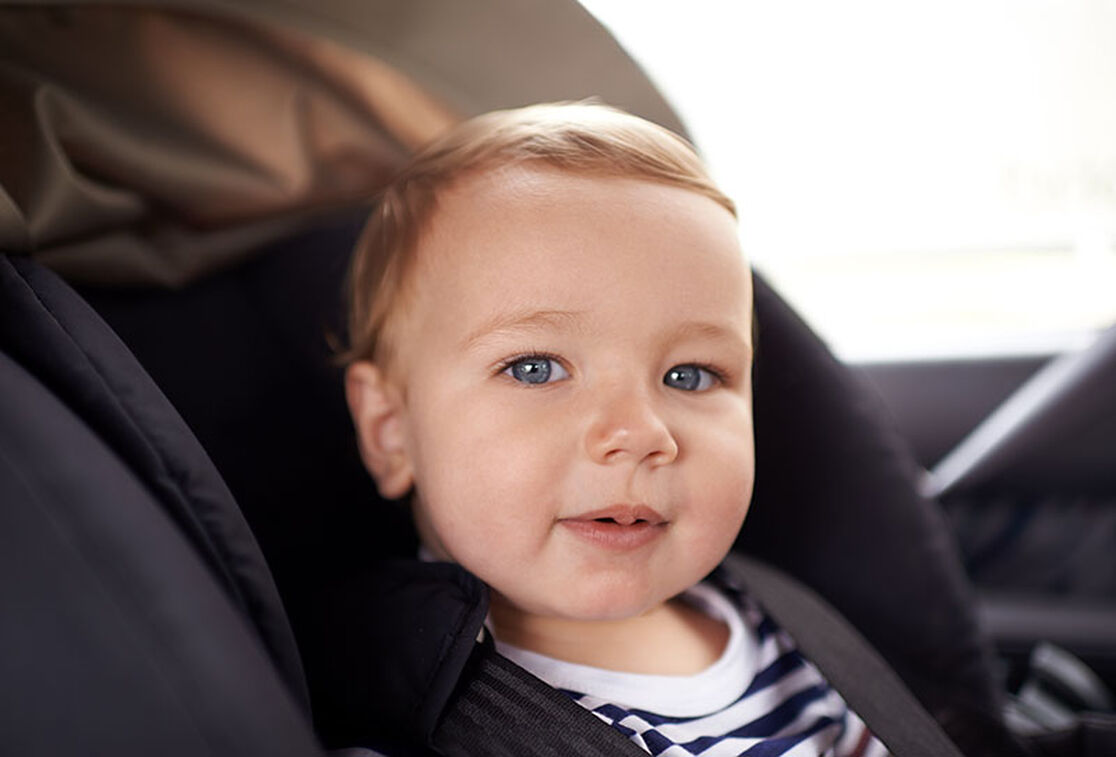For the past decade, scientists at The Ecology Center have been testing car seats for chemicals that could pose a risk to children’s health – like flame retardants, which are added in order to meet the federal fire test standard for vehicle accessories. Their latest study found that while companies are moving away from the most toxic flame retardants, there’s still a great deal more that could be done to make car seats safer (1).
Researchers analyzed 15 infant and toddler car seats purchased in 2016 and found that all 15 contained flame retardants. Also, for the first time in their years of testing, they found that flame retardants were not just in the foam padding – it was found in about a third of the fabrics, as well. Here are more of the study’s findings:
- Most car seats (13 of the 15) still contain brominated flame retardants which are often toxic, persist in our environment and in our bodies, and bioaccumulate as you go up the food chain. Tetrabromobisphenol A (TBBPA) is currently the most widely used brominated flame retardant, and animal studies have shown its impacts as a hormone disruptor that impacts both thyroid and estrogenic activity, as well as having neurotoxic impacts (2). It is detected in human tissues, can cross the placenta, and has been measured in breast milk samples throughout the world (3-5).
- Manufacturers have stopped using some flame retardants with known hazards, but the effects of the many of the substitutes are unknown.
- For the first time since they started testing in 2006, no lead was detected in any seats.
- In 2017, a car seat marketed as free of flame retardants will be on the market produced by UPPAbaby. (The researchers tested the new product and confirmed the claim.)
With how quickly fires can ignite after collisions, it does seem prudent to use flame retardants to give passengers more time to safely get away. Sadly, when it comes to car seats, the authors of the report state, “analyses of real-world fire scenarios suggest that flame retardant chemicals in car seats are unlikely to keep a child safer in a fire.”
There’s no doubt about it – car seats save lives. Motor vehicle injuries are a leading cause of death among children and, according to the U.S. Centers for Disease Control, in 2014, 34% of children who died were not using a car seat (6). So, the results of this study should not dissuade parents from using car seats.
What should you do?
Follow these recommendations from HealthyStuff.org:
- Contact the car seat companies. Let them know you expect them to manufacture products without toxic chemicals, which threaten the health of our children and natural resources. Car seat companies need to hear from people like you. They need to know we are tired of toxic chemicals being added to our children’s products, and demand safer, healthier options.
- Limit the time your children spend in their car seats. Only use the car seat during travel, not as a place for your child to nap or sit outside of the car.
- Limit direct sunlight on the car seat and high temperatures in your car. Flame retardants and other hazardous chemicals may be released at a higher rate when your car becomes hot. When possible, park in the shade or in covered parking. Window coverings in a car also substantially lower the interior temperature on a warm day.
- Vacuum the car interior and the nooks and crannies of car seats. Chemicals that migrate out, including flame retardants, can cling to dust particles. Open the car windows when possible.
- Shop smart. If you’re looking to purchase a car seat, they suggest you look for companies that have comprehensive chemical policies — ask if you can’t find the information easily — or a system to prioritize reduction and elimination of toxic chemicals in their products. Companies that sell children’s products should publicly disclose these policies.
As UPPAbaby has shown, car seats can indeed be made without the use of toxic flame retardants. Still, it costs more which limits how many children can use them. Every child deserves to have a safer car seat.
As stated in the report, “Policy makers should consider exempting child car seats from the federal flammability standard FMVSS 302. Despite 44 years of this U.S. regulation, The National Highway Traffic Safety Administration can provide no evidence suggesting that the rule protects children in vehicle fires. FMVSS 302 has resulted in car seat makers adding many thousands of pounds of chemical flame retardants to products that infants and children are in close contact with every day.”
References:
- Children's Car Seat Study 2016 - Report. (n.d.). Retrieved December 13, 2016, from http://www.ecocenter.org/healthy-stuff/pages/childrens-car-seat-study-2016-report
- Diamanti-Kandarakis, D., et al. (2009). Endocrine-Disrupting Chemicals: An Endocrine Society Scientific Statement. Retreived December 13, 2016, from http://oehha.ca.gov/media/downloads/proposition-65/comment/bpacomment13a.pdf
- Johnson-Restrepo, B., Adams, D. H., & Kannan, K. (2008). Tetrabromobisphenol A (TBBPA) and hexabromocyclododecanes (HBCDs) in tissues of humans, dolphins, and sharks from the United States.Chemosphere, 70(11), 1935-1944.
- Kawashiro, Y., Fukata, H., OMORI-INOUE, M., Kubonoya, K., Jotaki, T., TAKIGAM, H., … & Mori, C. (2008). Perinatal exposure to brominated flame retardants and polychlorinated biphenyls in Japan. Endocrine journal, 55(6), 1071-1084.
- Wikoff, D., Thompson, C., Perry, C., White, M., Borghoff, S., Fitzgerald, L., & Haws, L. C. (2015). Development of toxicity values and exposure estimates for tetrabromobisphenol A: application in a margin of exposure assessment.Journal of Applied Toxicology.
- Child Passenger Safety: Get the Facts. (2016, August 19). Retrieved December 13, 2016, from https://www.cdc.gov/motorvehiclesafety/child_passenger_safety/cps-factsheet.html
We aim to provide you with the most honest and credible information possible. This article was reviewed for accuracy by The Honest Team and its internal technical experts.
blog_review_statement



